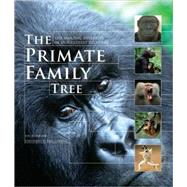
Note: Supplemental materials are not guaranteed with Rental or Used book purchases.
Purchase Benefits
What is included with this book?
| Foreword | |
| What is a Primate? | |
| Primate Characteristics | |
| Global Primate Distribution | |
| Diet and Habitat | |
| Gardeners of the Forest | |
| Primate Cultures | |
| Social Structures | |
| Communication | |
| Darwin's Big Idea | |
| Living with the Relatives | |
| Friend or Foe? | |
| Primate Tourism | |
| Primate Conservation | |
| In the Field | |
| Prosimians | |
| Introduction: Prosimians | |
| Lorises and the Potto | |
| Bushbabies | |
| Introducing Lemurs | |
| Dwarf and Mouse Lemurs | |
| Sportive Lemurs | |
| True Lemurs, Including Bamboo Lemurs | |
| The Indrid family | |
| Aye-aye | |
| Tarsiers | |
| New World Monkeys | |
| Introduction: New World Monkeys | |
| Marmosets and Tamarins | |
| Night Monkeys | |
| Titi Monkeys | |
| Capuchins and Squirrel Monkeys | |
| Sakis and Uakaris | |
| Howler Monkeys | |
| Spider Monkeys, Muriquis and Woolly Monkeys | |
| Old World Monkeys | |
| Introduction: Old World Monkeys | |
| Macaques | |
| Baboons | |
| Drill and Mandrill | |
| Mangabeys | |
| Patas Monkey and Swamp Monkey | |
| Vervet and Talapoin Monkeys | |
| Guenons | |
| Black-and-white Colobus | |
| Red Colobus and Olive Colobus | |
| Langurs | |
| Odd-nosed Colobines | |
| Proboscis Monkey | |
| APES | |
| Introduction: Apes | |
| Gibbons and Siamang | |
| Brachiation | |
| Orangutans | |
| Gorillas | |
| Chimpanzee and Bonobo | |
| The Cultured Ape | |
| Humans | |
| Where to Watch Primates | |
| Further Resources | |
| Glossary | |
| Index and Acknowledgments | |
| Table of Contents provided by Publisher. All Rights Reserved. |
The New copy of this book will include any supplemental materials advertised. Please check the title of the book to determine if it should include any access cards, study guides, lab manuals, CDs, etc.
The Used, Rental and eBook copies of this book are not guaranteed to include any supplemental materials. Typically, only the book itself is included. This is true even if the title states it includes any access cards, study guides, lab manuals, CDs, etc.